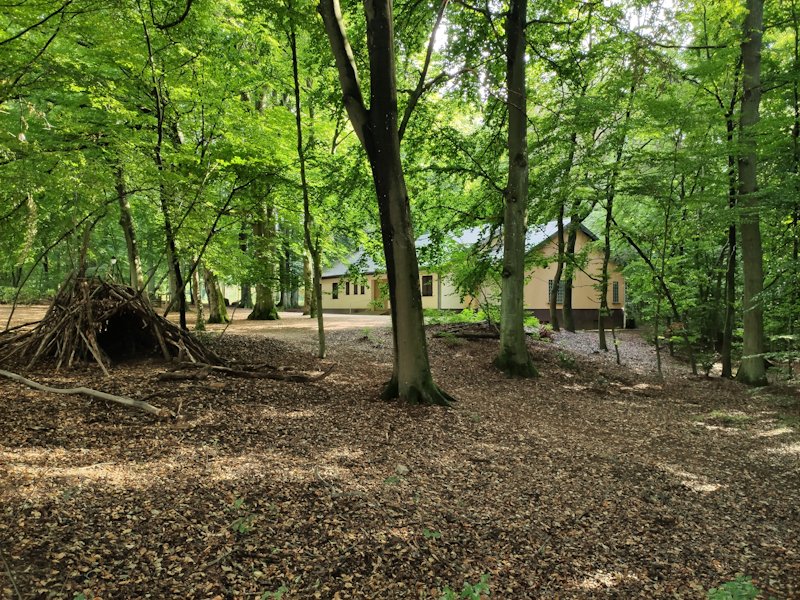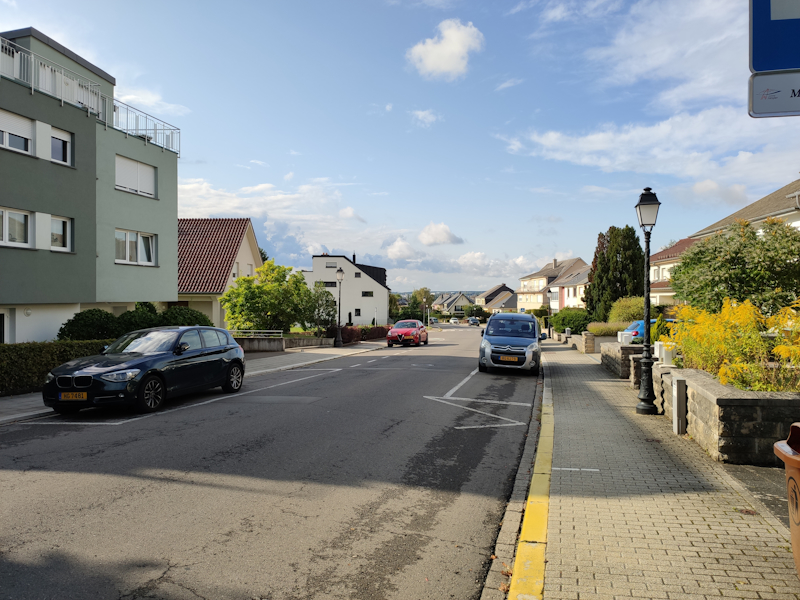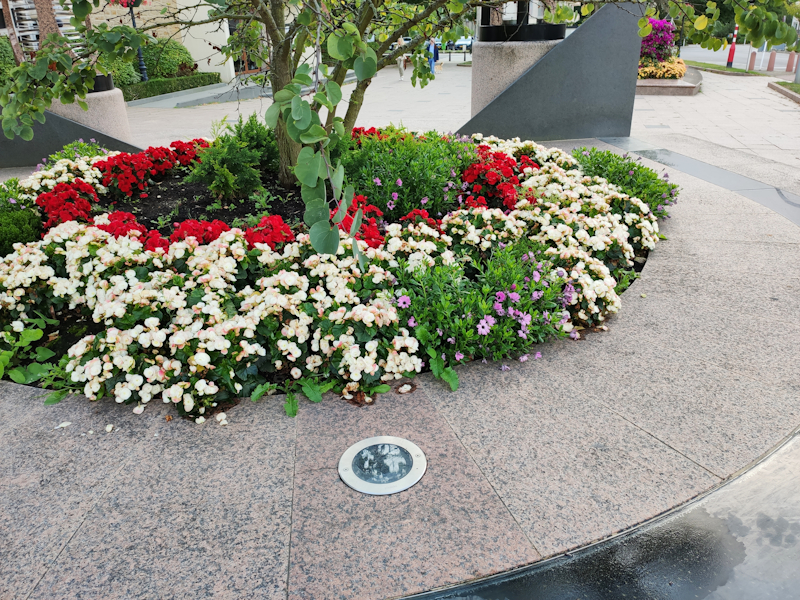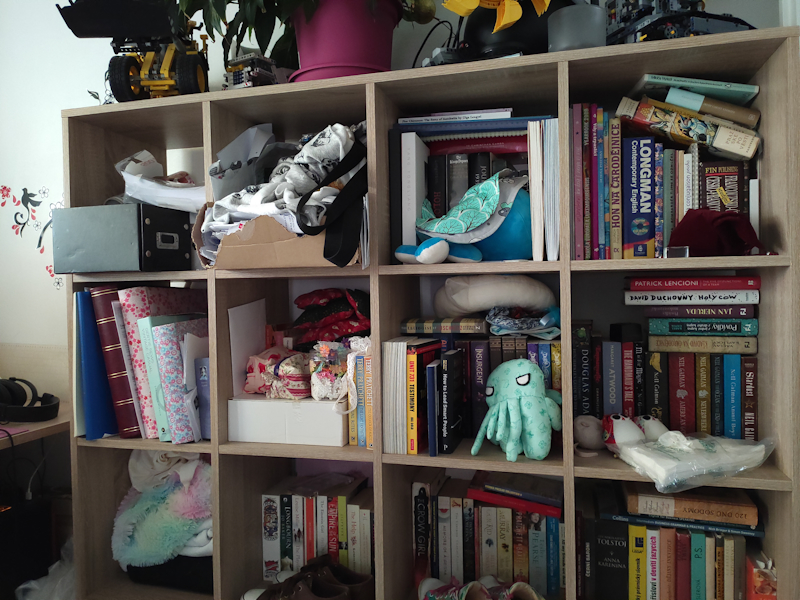The Xiaomi Mi9 Review: Flagship Performance At a Mid-Range Price
by Andrei Frumusanu on September 13, 2019 9:00 AM EST- Posted in
- Mobile
- Smartphones
- Xiaomi
- Snapdragon 855
- Xiaomi Mi9
Camera - Daylight Evaluation
The Mi9’s camera setup is certainly a key factor for the device. The combination of a triple camera setup at this price range is very uncommon, and Xiaomi historically has had quite good post-processing calibration. It’s also a new vendor amongst the many IMX586 6 implementations we’ve seen this year, giving us another look at how post-processing can differ results of the same hardware.

[ Mi9 ] - [ S10+ (E) ] - [ S10+ (S) ]
[ Xperia 1 ] - [ P30 Pro ] - [ Reno 10x ]
[ G8 ] - [ BlackShark 2 ] - [ RedMagic 3 ]
[ Pixel 3 ] - [ iPhone XS ]
In the first shot we see the Mi9 do very well in terms of the exposure. For this comparison I didn’t quite have all the IMX586 phones included, however I think this was probably the best showing of all the devices out there. Xiaomi’s processing still managed to accurately capture the lighting of the scene all without unnaturally darkening shadows or eating up the highlights.
Particularly the colour balance was spot on, another thing I noticed many phones have issues with in this scene. The Mi9 even populates the EXIF of the shot with the correct D55 WB illuminant.
In terms of detail, the Mi9 doesn’t stand out too much, but this was again expected of the camera sensor whose quad-bayer sensor design doesn’t seem to be able to have as quite good spatial resolution and pixel deep trench isolation as classical native bayer sensors.
The wide-angle shot also does very well in terms of exposure and colour-balance. Detail is also relatively strong compared to other wide-angle cameras, but clearly loses to the P30 Pro or Xperia 1. Also note that the wide angle is noticeably narrower than that of the S10 for example.
The telephoto shot is very good again in terms of composition and I don’t have much negative to say about it.

[ Mi9 ] - [ S10+ (E) ] - [ S10+ (S) ]
[ Xperia 1 ] - [ P30 Pro ] - [ Reno 10x ]
[ G8 ] - [ BlackShark 2 ] - [ RedMagic 3 ]
[ Pixel 3 ] - [ iPhone XS ]
In this shot, I think the Mi9’s colour temperature is just a tad too warm, but not too overly off. What’s noticeable here is that the capture is lacking a bit in dynamic range, for example crushing the shadows on the left car far too much, although I can’t say the Reno 10x with the same sensor does any better. Detail-wise, the Mi9 does very well here, avoiding any noticeable noise reduction or sharpening filters.
The wide angle again had a bit too warm colour temperature and this time around I’d also say the exposure is lacking in highlights, avoiding much in the top 10% of levels which results in a bit flatter image. Details for a wide-angle are very good.
The zoom is showcasing similar behaviour, a bit off colour temperature and lacking a bit in the brighter highlights of the scene.

[ Mi9 ] - [ S10+ (E) ] - [ S10+ (S) ]
[ Xperia 1 ] - [ P30 Pro ]
[ Reno 10x ] - [ G8 ] - [ BlackShark 2 ]
[ RedMagic 3 ] - [ Pixel 3 ]
When under cloud cover, the Mi9 seems to also do well in terms of exposure although in this particular scene the flowers look overexposed. The main sensor’s limitations here seem to be solely related to its hardware capabilities, notably lacking behind in sheer dynamic range to be able to capture the petals correctly.
The wide-angle shot is excellent and amongst the best. The reduced viewing angle with the 16MP sensor resolution means the Mi9 gets amongst the most detailed shots among the wide-angle crew. It showcases what the G8 could have been if it didn’t have a post-processing smear filter.
The telephoto here lacks a bit in dynamic range and thus blows out the details of the petals of the flowers.

[ Mi9 ] - [ S10+ (E) ] - [ S10+ (S) ]
[ Xperia 1 ] - [ P30 Pro ]
[ Reno 10x ] - [ G8 ] - [ BlackShark 2 ]
[ RedMagic 3 ] - [ Pixel 3 ] [ iPhone XS ]
The next scene was locally overcast, however still showcasing a bright sky in the background. This confused the processing on the Mi9 a bit as the shots between the main and wide-angle weren’t consistent in terms of their exposure, with the wide-angle being far too dark.
The fine power lines against the bright sky also serve as good subjects showcasing some of the HDR/sharpening drawbacks – we see some odd step-wise artefacts on the Mi9’s towards the centre-left lines, with generally some more noticeable brightness halos around the lines. The latter are also extremely pronounced on the Snapdragon S10 so it’s not something unique to the Mi9.
Because of the exposure issue, the wide-angle isn’t very usable in my opinion. The zoom camera is extremely competitive and I can’t see immediate flaws.

[ Mi9 ] - [ S10+ (E) ] - [ S10+ (S) ] - [ Xperia 1 ] - [ P30 Pro ]
[ Reno 10x ] - [ G8 ] - [ BlackShark 2 ] - [ RedMagic 3 ]
[ Pixel 3 ] - [ iPhone XS ]
Indoors, the Mi9’s main camera sensor is good, but we’re again seeing some hardware limitation of the IMX586 we’ve seen in numerous other phones, such as the reduced dynamic with less details in shadows.
Daylight Camera Conclusion
Overall, I found the cameras on the Mi9 to be very good and also quite competitive. I think this may be the best implementation of the IMX586 in terms of daylight capture results, with Xiaomi traditionally having good calibration resulting in balanced HDR and good colour temperatures. Things weren’t always perfect and there’s shots here and there which were a bit off the mark, but it’s nothing too bad. I think overall, it’s a better main sensor camera experience than the OnePlus 7, both phones being otherwise equal in hardware.
The wide-angle on the Mi9 also was excellent and is above-average in this category. Xiaomi avoids any obvious degrading post-processing and the 16MP thus shines in terms of detail. It wasn’t quite the best in terms of exposure as sometimes it wasn’t consistent with the results that the main camera produced.
Finally, the telephoto was also very good and competitive with good amount of detail, actually achieving some of the best results amongst the 2x optical modules out there. I didn’t see anything particularly wrong here for the Mi9 so it’s a definite positive result.
Overall Xiaomi did a good job on the cameras of the Mi9 – at least in the context of what the sensors are able to achieve.










96 Comments
View All Comments
MrSpadge - Friday, September 13, 2019 - link
It's the built-in camera app, called "Kamera" as far as I can tell. However, I had a quick look and can't find any sharpening settings now either, so maybe they've removed that with some update.In order to load this .eu rom I'd have to reinstall everything not saved in the google account, right? If so: thanks, I'll keep it in mind for now.
Redmyth79 - Friday, September 13, 2019 - link
LOL, yeah I had it to until the update switched from 10.26 to 10.27 I believe it wasRedmyth79 - Friday, September 13, 2019 - link
I used to have the option on EU ROM to sharpen, Saturation, and contrast but after the 10.26-27 update I lost that ability and truthfully I'm pissed about that. But I still am using stock ROM as I have yet to unlock my boot loader although I can at anytime as I've had it sense mayElFenix - Friday, September 13, 2019 - link
52 mm lenses are not telephoto! it's just normal! quit calling it telephoto!Redmyth79 - Friday, September 13, 2019 - link
It has a telephoto equal to S10+, as it's actually a Samsung telephoto lens.ElFenix - Friday, September 13, 2019 - link
still not telephoto!Redmyth79 - Friday, September 13, 2019 - link
What ever you say master! It's telephoto in cellphone world!It's only a 2x not 3 or 5x optical but 2x the factory wide angle.
s.yu - Saturday, September 14, 2019 - link
It's telephoto if1. It's longer than normal, which it is not.
2. Its physical length is shorter than its focal length, which we don't know of, but is likely true.
NXTwoThou - Friday, September 13, 2019 - link
FYI, the wireless charging is 20W. So you can technically charge wirelessly faster than you can with the (global)included charger. China version came with the 27W charger and bought the 20W pad(and 20W car wireless auto grippy one) to go along with it.Awful - Friday, September 13, 2019 - link
It's a shame it wasn't the Mi 9T/Pro - as it really is a newer iteration on the Mi 9 - pretty much everything's improved from what I can tell. I've had mine for a few months now and the value is through the roof for what you get.Also noteworthy is just how easy/good GCam is on these - you can just download the APK and go (camera2 API already enabled so no messing round). It's nightmode and HDR+ fill in a lot of the weaknesses of the Xiaomi's camera app nicely.